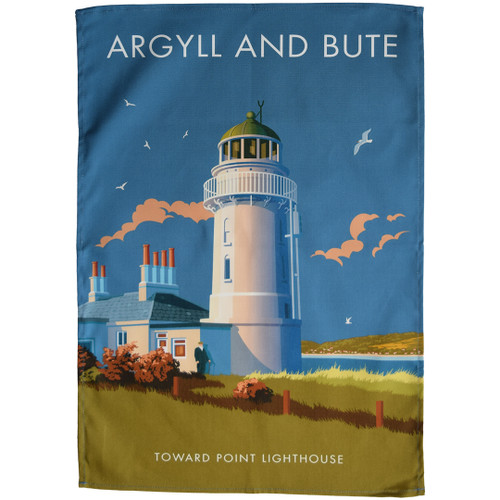Rivers are strange and mythical things. Ancient Romans believed that the god Volturnus controlled the rivers. In Egypt the Nile was presided over by several divine figures. And even in British Folklore we have Old Father Thames. So it's no surprise to know that the Clyde is named after the local Celtic goddess Clota - a name which literally means 'the strongly flowing one'.
The second longest river in Scotland, the Clyde has always been an important trading route. And as traffic on the Clyde increased, so too did the need for lighthouses. Without them, ships would run aground or be wrecked on jagged rocks. That's why, in 1812, at the height of the Industrial Revolution, a lighthouse was built at Toward Point, the southernmost point of the Cowal Peninsula.
This design shows Toward Point Lighthouse towering above the shore, overlooking the widening mouth of the Clyde. Sunlight catches the edges of clouds; the lighthouse keeper stands at the door; seagulls flit and circle overhead - a beautiful scene to enjoy as you dry the dishes.













